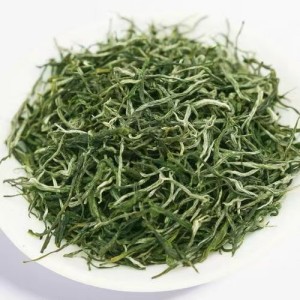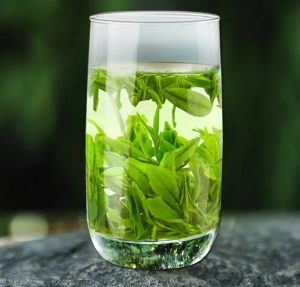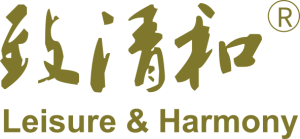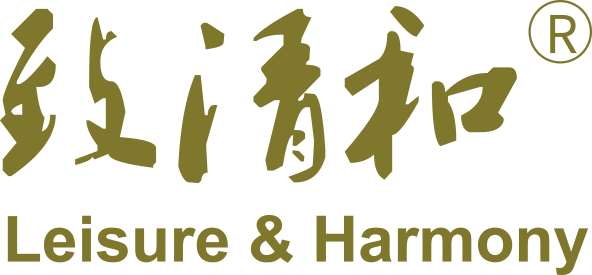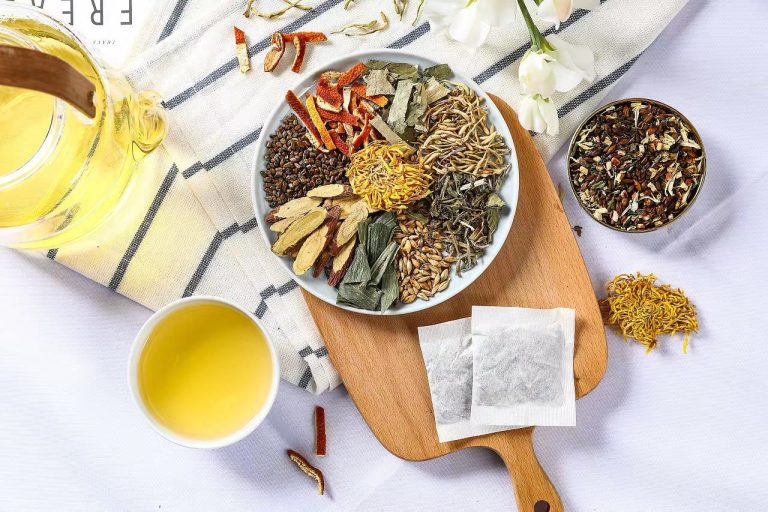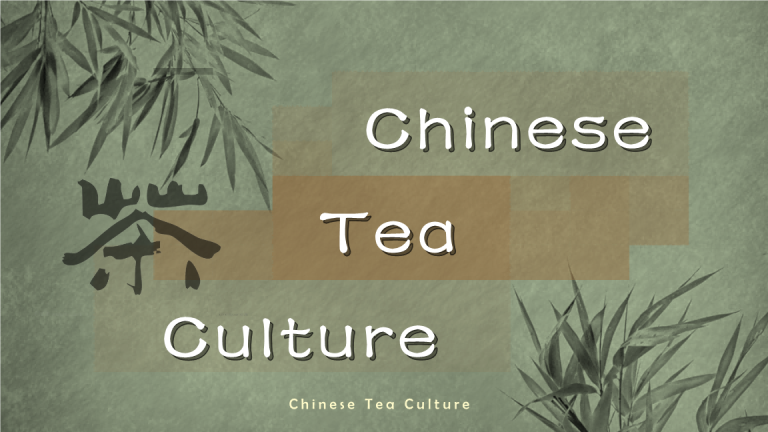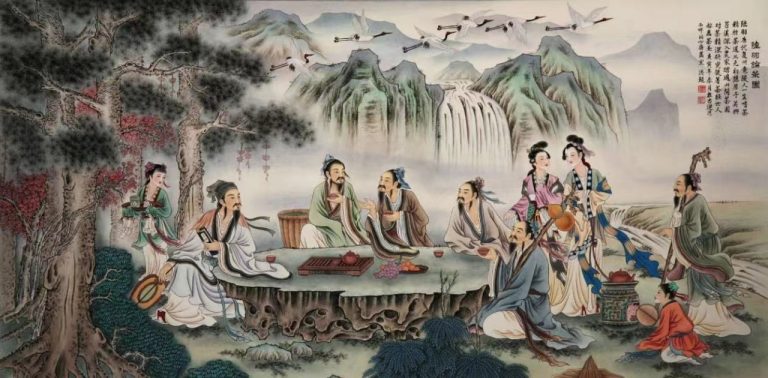Hangzhou Zhiqinghe Tea Tech Co.,Ltd.
Since 1992.
China Famous Tea In The History
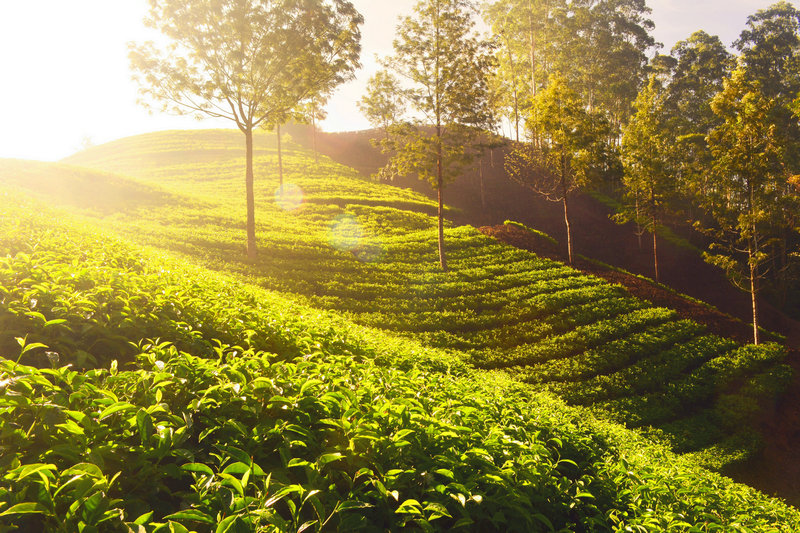
1. West Lake Dragon Well Tea
It is produced in the mountains around the West Lake in Hangzhou, Zhejiang Province. Hangzhou is not only famous for the West Lake at home and abroad, but also for the West Lake Longjing Tea. The color of tea: green and yellow. The shape of tea leaves: flat and smooth, with sharp Miao tips, it is green tea. Taste of tea: the tea soup is light yellow (green) and bright; Fragrant or tender chestnut, but some tea has high fire fragrance; It tastes fresh and mellow.
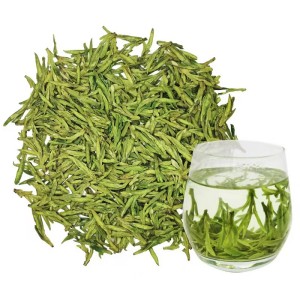
2. Zhaopo tea
Zhaopo tea, produced in Mianzhu City, Sichuan Province, has a history of more than 1000 years. From the Han and Tang Dynasties to the Song Dynasty, it went through the development process of steaming green cake tea, steaming green group tea and then loose tea. By the Republic of China, Zhaopo tea had developed into green tea, yellow tea, white tea, black tea, etc. Green tea is famous for its tender buds, quiet fragrance, elegant purpose.
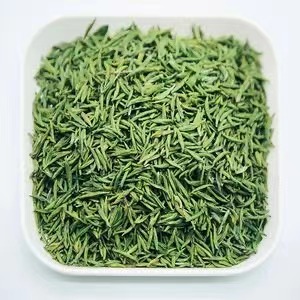
3. Rizhao green tea
Rizhao green tea is produced in Rizhao City, Shandong Province. Rizhao is one of the three sea green tea cities recognized by world tea experts. Rizhao green tea has dark green color of dry tea, bright yellow green color after brewing, rich chestnut fragrance, sweet aftertaste, thick leaves, high aroma, brewing resistance and other unique quality, known as “the new aristocrat of China’s green tea clock”.
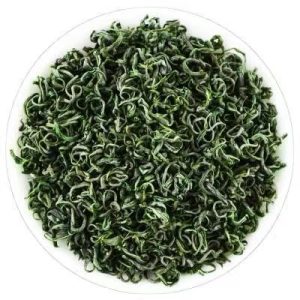
4. Pulong tea
Pulong tea is a traditional tea of Zhuang nationality and one of the famous teas in Yunnan. It is a tea with excellent quality that has not been fermented and has been processed through withering, bleaching, rolling, baking and other processes.
Pulong tea has a variety of nutritional values, such as promoting fluid production and thirst quenching, improving eyeslight, clearing the mind, refreshing, and removing greasy.
Pulong tea, a special kind of green tea, was created by Zhuang tea farmers in Pulong Village in the early years of the Republic of China through fine roasting. In 2015, it was officially named “Pulong Tea”.
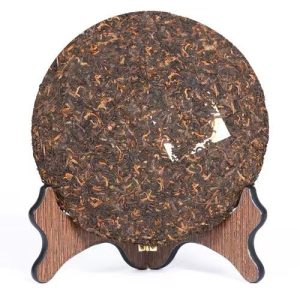
5. Laoshang green tea
Laoshan green tea is produced in Laoshan District, Qingdao, Shandong Province. Xiaoyang Spring Laoshan Green Tea. Laoshan is located on the shore of the Yellow Sea. It has a temperate marine monsoon climate. The soil is fertile and slightly acidic. It is known as the Little Jiangnan in the North. In 1959, Laoshan District succeeded in introducing tea from the south to the north, forming Laoshan green tea with unique quality. Laoshan green tea has the characteristics of thick leaves, pea fragrance, strong taste and brewing resistance. It is divided into spring tea, summer tea and autumn tea according to the picking season of fresh leaves; According to the raw materials and processing technology of fresh leaves, it can be divided into curly green tea and flat green tea.
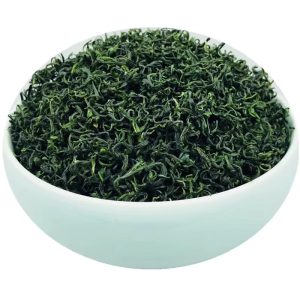
6. Wuyi Rock Tea
Wuyi Rock Tea is a kind of oolong tea, which is reputed as the king of tea. The unique and beautiful scenery of Wuyi Mountain is the first in the southeast of China. Tea trees grow in rock crevices. Wuyi Rock Tea has the fragrance of green tea and the mellowness of black tea. It is the best oolong tea and one of the top ten famous teas in China. Wuyi rock tea is a semi fermented Qing tea, and the production method is between green tea and black tea. Among them, the most famous is Dahongpao, which enjoys a good reputation in the world.
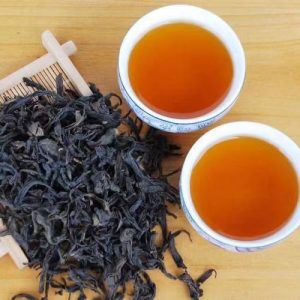
7. Dongting Biluochun
Dongting Biluochun is produced in Dongting Mountain, Taihu Lake, Suzhou, Jiangsu Province. The shape of tea: Biluochun tea is thin, curled into a snail shape, and the tea is covered with fuzz. Tea color: Silver green, attractive, looks like green tea. Taste of tea: fresh and lasting aroma, mellow taste, soup is bright green.
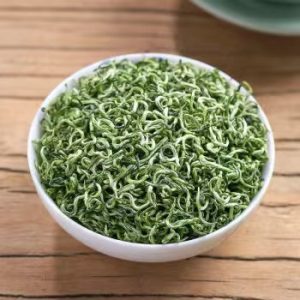
8. Huangshan Maofeng Tea
Huangshan Maofeng Tea is produced in Huangshan, south of Taiping County and north of Shexian County, Anhui Province. The tea bud is particularly plump, soft and tender, with thick leaves, long lasting foam resistance, fragrant, mellow and sweet taste. It is the top grade of tea. The color of tea: tender green and oily. The shape of tea: thin and flat, like the tongue of a sparrow, the bud of tea is like the blade of a knife; The pekoe on the tea leaves is exposed, and the color is like ivory. Taste of tea: It has a tender fragrance, fresh and lasting, mellow and sweet taste, and clear apricot yellow soup.
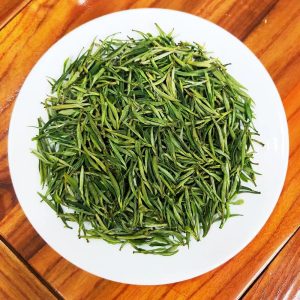
9. Lushan Yunwu Tea
Lushan Yunwu Tea is produced in Lushan, Jiangxi Province. Mount Lushan, known as “the most beautiful mountain in the world”, faces the Yangtze River in the north and Duyang Lake in the south. The climate is mild and the landscape is beautiful, which is very suitable for the growth of tea trees. Lushan Yunwu tea bud is very fat and pekoe is obvious, with beautiful stripes, strong fragrance and sweet taste, and clear soup color. It is a fine product of green tea.
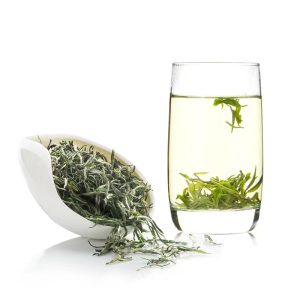
10. Anxi Tieguanyin
Anxi Tieguanyin is produced in Anxi County, Quanzhou City, Fujian Province. Anxi Tieguanyin Tea has a long history and is known as the King of Tea. “Sand green frosting” has become the symbol of Tieguanyin’s high grade, and has won the reputation of “green leaves with red edges, 7 times of soaking and lingering fragrance”. Tieguanyin belongs to oolong tea, which is made by semi fermentation. Tea color: black, oily, sand green. The shape of tea leaves: the strips are fat and tight, rolled tightly and heavy. Taste of tea: The tea has a long and fragrant fragrance, with osmanthus fragrance. The taste is mellow, sweet and refreshing. The soup color is orange and fresh.
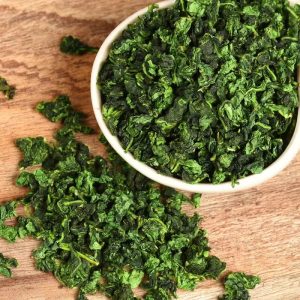
11. Junshan Silver Needle Tea
Junshan Silver Needle is one of the famous yellow tea in China. Junshan is an island in Dongting Lake, Yueyang County, Hunan Province. In the Qing Dynasty, Junshan tea was divided into two types, namely “Jian tea” and “Rong tea”. “Jian tea” is like a tea sword. It is white and fluffy. It is accepted as Gong tea, known as “GongJian”. Yellow tea is formed by slight fermentation. Tea color: golden yellow and bright. Tea shape: the bud is plump, straight, even and full of fluff. Taste of tea: the aroma is fresh, the soup color is light yellow, and sweet.
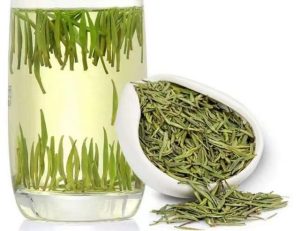
12. Lu’an Guapian (also known as Sliced Tea)
Lu’an Guapian is a special kind of green tea. It is produced in Lu’an, Anhui Province. It was called “Luzhou Lu’an Tea” in the Tang Dynasty. The famous tea in Chinese history, which is called “Liu’an Guapian” for short, was the top grade tea in the Ming Dynasty. It was the Gong tea of the imperial court in the Qing Dynasty. Lu’an GuaPianelon are collected from local unique varieties. After slicing, removing buds and tea stems, they are made into slice shaped tea leaves similar to melon seeds through unique traditional processing technology. The baking process is very exquisite.
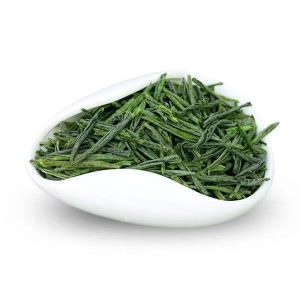
13. Pujiang Chunhao Tea
Pujiang Chunhao Tea is produced in Hangping, Yuzhai and Huaqiao areas of Longmen Mountain in Xianxia Mountain, Pujiang County, Zhejiang Province. It was a new famous tea in the 1980s and was rated as a national famous tea. It has the characteristics of tight curly shape, hairy leaves, delicate green tea, superb aroma, fresh and mellow taste, clear and bright soup.
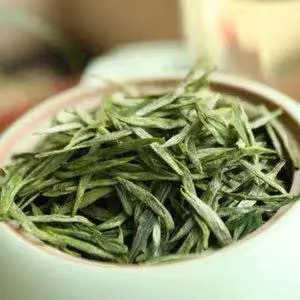
14. Yuexi Cuilan Tea
Yuexi Cuilan Tea is a kind of high-quality cloud tea and a newly created famous tea. It is produced in Miaodaoshan, Zhubo, Toutuo, Laibang and other places in Yuexi County, the hinterland of Dabie Mountains in Wanxi. The soil is fertile, the climate is mild, the rainfall is abundant, and the temperature difference between day and night is large. Tea gardens are mostly distributed in the deep mountain canyons with an altitude of 600-800 meters, surrounded by verdant trees, fragrant flowers and clouds. “Yuexi Cuilan” is created on the basis of traditional production technology of local famous tea small orchids.
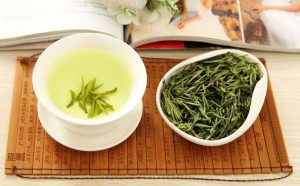
15. Naxi Tezao tea
The bud type of Naxi Tezao tea can be harvested before February 10 all the year round. It is a famous Maofeng tea with one bud and two leaves that can be picked in the middle and late February, and new tea is usually available on the Lunar New Year. The tea garden was first exploited in Sichuan, 30-40 days earlier than the major tea producing areas in China such as Jiangsu, Zhejiang, Anhui. The tea garden has good quality, flat and straight shape, fresh yellow green color, strong and lasting aroma of chestnut, fresh taste, and even bright yellow green at the bottom of the leaves.

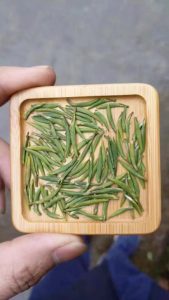
16. Xinyang Maojian Tea
Xinyang Maojian Tea is a famous Maojian tea in China and one of the famous specialties in Henan Province. It is produced in the mountains of Xinyang, Henan Province. Xinyang Maojian has always been famous at home and abroad for its unique style of “thin, round, light, straight, more pekoe, high fragrance, strong taste and green soup”. It belongs to green tea. Tea color: the color is green, and the pekoe is exposed. Shape: the cable is thin, round and straight. Taste: the soup is green and bright, with fresh aroma and mellow taste.
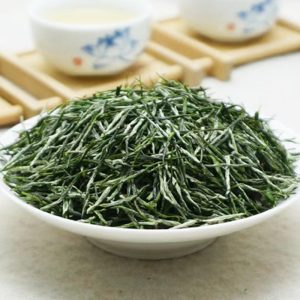
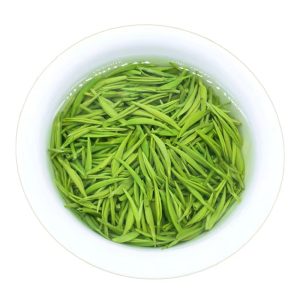
17. Qimen black tea
Qimen black tea is a famous black tea, which is also called Qihong. It is produced in Qimen County, a branch of Huangshan Mountain in the southwest of Anhui Province. It belongs to black tea and is made by full fermentation. Tea leaves are dark and moist, commonly known as “Baoguang”. Tea shape: tight, thin, even and beautiful. Taste of tea: The aroma is sweet and lasting, and it is similar to the orchid fragrance, commonly known as “Qimen Fragrance”. The soup is red and bright, and the taste is sweet, fresh and mellow.
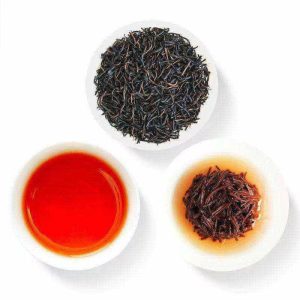
18. Mengding Ganlu Tea
Mengding Ganlu is a famous tea in history. It is produced in Mengding Mountain Town, Ya’an, Sichuan Province. It is the oldest famous tea in China and is honored as “the Elders in Tea”. In Sanskrit, Ganlu means “to recite ancestors”. Features of tea: the tea is compact, with many silver hairs, fragrant, fresh, beautiful appearance, high and cool aroma, mellow and sweet taste, fine shape, and strong young shoots.
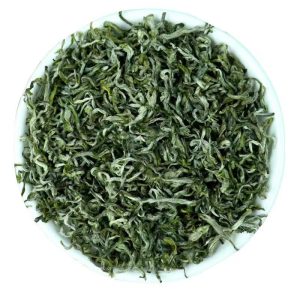
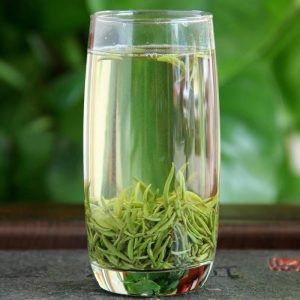
19. Duyun Maojian tea
Duyun Maojian is one of the three famous teas in Guizhou and one of the ten famous teas in China. It was named by Mao Zedong himself in 1956, and is also known as “White Maojian”, “Fine Maojian”, “Fish Hook Tea” and “Que Shi Tea”.
It is produced in Duyun City, Guizhou Province and belongs to Qiannan Buyei and Miao Autonomous Region. Duyun Maojian has the characteristics of “three green reveal yellow”, that is, the dry tea color is green with yellow, the tea soup is green with yellow, and the leaf bottom is green with yellow.
The finished product tea is uniformly green in color, uniform in shape, exposed in pekoe, curly in strands, fresh and tender in aroma, fresh and thick in taste, sweet in aftertaste, clear in tea soup color, bright in leaf bottom, and plump in bud. Its quality is excellent. Its shape is comparable to that of Biluochun in Taihu Lake, and its quality is comparable to that of Xinyang Maojian.
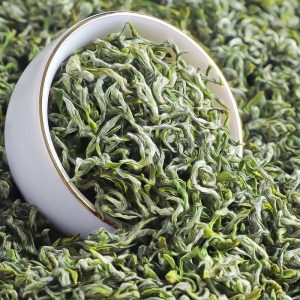
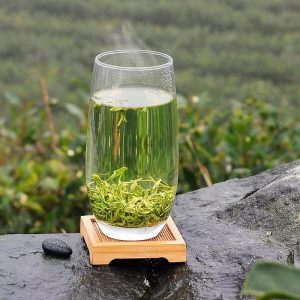
20. Shimen Yinfeng Tea
Shimen Yinfeng Tea was created in 1988, with an annual output of about 50 tons. The raw materials of the fresh tea leaves come from the Yunwu Mountain at the east end of Shimen County, Hunan Province, with an altitude of 500-1000 meters. The atmosphere, soil and water around the tea garden are pollution-free. It is tight, thin, and straight, covered with silver hair, green and oily in color, clear and lasting in aroma, mellow and refreshing in taste, sweet in aftertaste, and fresh and complete in leaf base. It has the unique quality that the first time you brew it, the tea tastes slight, the second time you brew it, the tea tastes strong, and the third and fourth times you brew it, the tea still has its fragrance.
